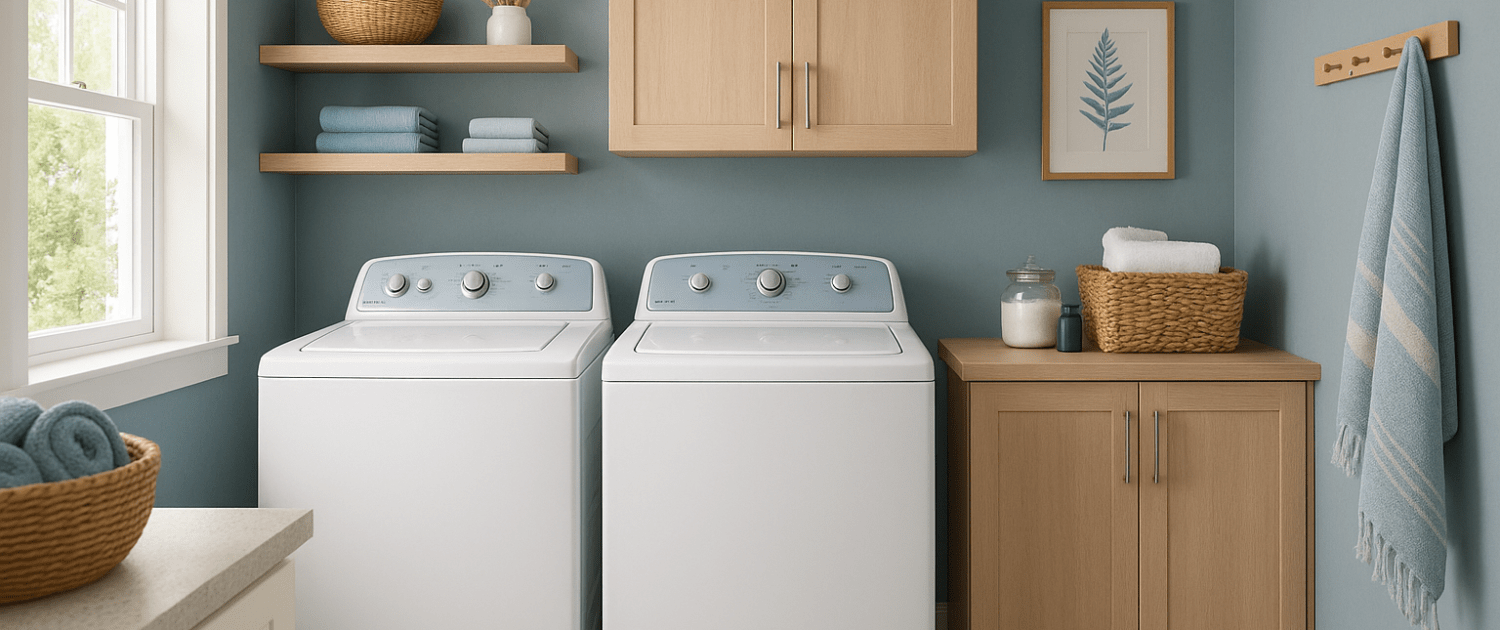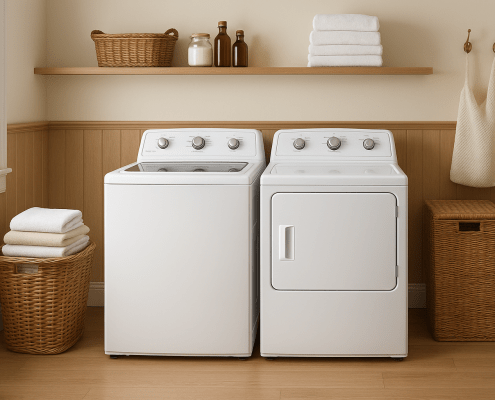Whirlpool Washing Machine Splutch Cam Kit W10721967 Replacement Guide
Steven E / Wednesday May 14, 2025
Is your Whirlpool top-load washer leaving your clothes soggy or making unsettling noises during cycles? You might be dealing with a faulty splutch cam kit, but don’t worry—fixing it is easier than you think! Dive into our comprehensive guide below and watch the how-to video that will walk you step-by-step through the process, saving you the hassle and expense of a professional service call.
Looking for the right part? Enter your appliance model number below to find the exact match and get your appliance running like new again!
Noticed your Whirlpool top-load washer skipping the spin cycle or making weird grinding noises? The culprit could be the splutch cam kit and part W10721967 is the fix you need. It’s a pretty straightforward repair that can save you from costly service calls. Grab your socket set and let’s walk through replacing the cam kit so your washer runs smooth again.
The information in this article may not apply to your specific appliance model. We recommend consulting your manufacturer’s documentation or contact us with any questions.
Watch: How to install a splutch cam kit
Safety First
Safety comes first when working on any appliance. Here are some practical tips to help keep you safe:
- Always turn off the power by unplugging the appliance or switching off the circuit breaker before starting. This protects you from the risk of electric shock.
- Wear insulated gloves to protect your hands from sharp edges, pinching hazards, or debris.
- Take your time and work at a steady pace to avoid accidents or injuries.
- Make sure your workspace is well-lit so you can clearly see and access the parts you’re working on.
- Keep your area organized and free of clutter, and ensure children and pets are kept away from the workspace.
- Never handle internal parts with wet hands. Make sure both your hands and the work area are completely dry.
- Check your appliance’s user manual for specific instructions or safety guidelines related to your repair.
- Handle parts gently to prevent damaging the appliance or injuring yourself by using too much force.
- Wear safety glasses if you’re dealing with chemicals, dust, or large debris to protect your eyes.
- If the appliance was recently used, give it time to cool down before working on any heated components.
- Take photos or notes of wiring connections before disconnecting anything. This makes reassembly much easier.
- Avoid touching exposed wires or terminals. If you need to handle wires, use non-conductive tools or wear insulated gloves to reduce the risk of electrical shock.
Gather the Necessary Tools and Supplies
To complete this repair, you will need the following tools:
- Phillips head screwdriver
- Flathead screwdriver
- 5/16 inch nut driver
- 13mm socket and ratchet wrench
- Needle nose pliers (optional)
As well as these supplies:
- Replacement splutch cam kit
- Shims or furniture dolly to tilt and support the washer
Removing the Access Panels
With the washing machine safely tilted back and supported, we can begin dismantling to access the splutch cam.
- Remove the sound shield on the front lower panel of the washer. There are tabs that hold it in place – carefully flex the panel to release the tabs and pull it forward to remove it. Set the sound shield aside so that it will not get damaged.
- Remove the belt shield that covers the motor drive pulley and belt. Use a 5/16-inch nut driver to remove the two screws that secure the belt shield. Set these screws aside in a safe place. Pull the belt shield forward and off of the washer.
Removing these two access panels exposes the drive belt and allows us to proceed with removing the belt.
Removing the Drive Belt and Shifter
With the belt now accessible, we can detach it from the drive motor and tub pulleys.
- Insert a flathead screwdriver between the belt and pulley and gently pry the belt off each pulley while rotating it. Take care not to damage the belt surfaces. Remove the belt completely and set it aside.
- Detach the drive motor shifter mechanism to allow clearance for removing the splutch cam.
- Use a Phillips screwdriver to remove the two screws that hold the shifter in place. Carefully move the shifter mechanism out of the way, being sure to disconnect the linkage arm from the splutch cam gear as you move it. Keep the shifter nearby so it can be easily reinstalled later.
Removing the Pulley and Splutch Cam
- There is a pulley attached to the splutch cam shaft that will need to be detached first. Hold the pulley securely while using a 13mm socket and ratchet wrench to loosen and remove the center nut.
- With the nut removed, slide the pulley off of the splutch cam shaft.
- There is an inner locking collar piece that connects the splutch cam to the shaft. Use a flathead screwdriver to press in on the locking tabs around the perimeter while sliding the splutch cam assembly off of the shaft.
- Take note of the position and orientation of the different components as you remove them so they can be properly reinstalled.
Installing the New Splutch Cam Kit
The kit will include the main splutch cam gear, a spring, and the locking collar pieces. Examine the new cam – it may look slightly different than the original but will function the same.
- Slide the spring over the splutch cam shaft, followed by the splutch cam gear. Orient the gear so the shifter linkage arm slot is in the 12 o’clock position.
- Install the locking collar around the splutch cam gear with the open side facing upward. Align this opening with the shifter arm slot on the gear.
- Press in firmly on the locking collar tabs as you slide it into place until it snaps into the locked position. Try rotating the splutch cam to ensure the locking collar has properly engaged.
- Reattach the shifter mechanism, making sure the linkage arm inserts fully into the slot on the splutch cam gear. Replace the two screws to secure it.
Reassembling the Washer
Now that the new splutch cam is installed, we can reassemble the washer.
- Slide the pulley back over the splutch cam shaft, aligning the interior splines. Replace the center nut and tighten it down securely with the 13mm socket and ratchet.
- Loop the drive belt back over the motor drive pulley and then the tub pulley. Rotate the pulleys by hand to seat the belt in the pulley grooves. Give the belt a test spin to make sure it is properly aligned and moving smoothly.
- Reposition the belt shield and replace the two 5/16-inch screws to secure it.
- Finally, pop the sound shield back into place by pressing it onto the front panel tabs until it clicks into place.
- Carefully tilt the washing machine back to its upright position, ensuring stability.
- Plug the washer back in and restore power at the circuit breaker.
- Verify normal functioning by running a test cycle.
Where To Find Us
If you need any replacement parts for your appliances, you can enter your model number at AppliancePartsPros.com to locate and order them quickly. Most orders arrive in just two business days, and we have tons of great information in our repair help section and YouTube videos to help you troubleshoot.
Stay connected with the latest DIY tips, tutorial videos, and repair guides by following us on Facebook, Instagram, and Twitter. We love hearing about your repair stories and successes. If you need more help or want personalized guidance, feel free to reach out. We’re ready to help you take on your next project with confidence!
With nearly a decade of experience in providing top-notch customer service regarding appliance parts and repair, Steven enjoys sharing practical advice, troubleshooting tips, and interesting information to help readers stay informed.





